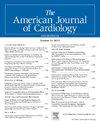Long-Term Healthcare Utilization and Outcomes in Patients Hospitalized for Heart Failure With and Without Atrial Fibrillation
IF 2.1
3区 医学
Q2 CARDIAC & CARDIOVASCULAR SYSTEMS
引用次数: 0
Abstract
The long-term association between AF and clinical outcomes, healthcare resource utilization, and healthcare costs among patients with HF remains underexplored. We conducted an exploratory analysis of 5-year outcomes among patients enrolled in the patient-centered care transitions in HF (PACT-HF) stepped-wedge cluster randomized trial who were hospitalized for HF and discharged alive between February 2015 and March 2016. Patients were stratified by baseline AF status. Administrative health databases were linked to assess mortality, rehospitalizations, emergency department visits, healthcare utilization, and costs. Mortality was analyzed using Cox proportional hazards models adjusted for baseline comorbidities. Healthcare utilization and cost differences were assessed using Wilcoxon and generalized linear models. Among 4,441 patients, 2,151 patients (48.4%) had AF at baseline. Patients with AF were older and had a higher prevalence of hypertension, stroke, and vascular disease. Patients with AF had a shorter life span (mean [SD] days alive 957.9 [697.8] vs 1,119.6 [698.2], p <0.01) and a higher 5-year all-cause mortality (adjusted HR 1.09 95% CI 1.01 to 1.17; p = 0.03) relative to those without AF. Patients with AF experienced more all-cause rehospitalizations (mean [SD] 3.2 [8.3] vs 2.6 [7.9], p = 0.03) and longer hospital length of stays (mean [SD] days 29.6 [48.6] vs 24.8 [46.9], p <0.01), but no difference in HF rehospitalizations (mean [SD] 0.9 [4.5] vs 0.8 [3.6], p = 0.24) than those without AF. Annual healthcare costs were greater in the AF cohort (mean [SD] $83,748 [114,398] vs $77,792 [114,874]) CAD. In conclusion, despite only modestly increased mortality, patients with AF experienced substantially greater healthcare utilization and cost, largely unrelated to HF-specific care. These exploratory findings underscore the need for a multidisciplinary approach to reduce morbidity and optimize care delivery for patients with HF and comorbid AF.
伴有和不伴有心房颤动的心力衰竭住院患者的长期医疗保健利用和结果
房颤与心衰患者的临床结果、医疗资源利用和医疗费用之间的长期关系仍未得到充分探讨。我们对2015年2月至2016年3月期间因心衰住院并活着出院的患者进行了一项以患者为中心的心衰护理转变(PACT-HF)楔形聚类随机试验的5年结局进行了探索性分析。根据基线房颤状态对患者进行分层。与行政卫生数据库联系,评估死亡率、再住院率、急诊科访问量、医疗保健利用和成本。采用Cox比例风险模型对基线合并症进行校正,分析死亡率。使用Wilcoxon和广义线性模型评估医疗保健利用和成本差异。在4441名患者中,2151名患者(48.4%)在基线时患有房颤。房颤患者年龄较大,高血压、中风和血管疾病的患病率较高。房颤患者的寿命较短(平均[SD]存活天数957.9[697.8]对1119.6 [698.2],P < 0.01), 5年全因死亡率较高(调整后HR 1.09 95% CI 1.01-1.17;P = 0.03)。房颤患者的全因再住院次数较多(平均[SD] 3.2[8.3]对2.6 [7.9],P = 0.03),住院时间较长(平均[SD] 29.6[48.6]对24.8 [46.9],P < 0.01),但房颤再住院次数无差异(平均[SD] 0.9[4.5]对0.8 [3.6],P = 0.24)。房颤组的年医疗费用较高(平均[SD] 83,748美元[114,398]对77,792美元[114,874])。总之,尽管死亡率只有轻微增加,但房颤患者的医疗保健利用率和成本显著增加,这在很大程度上与hf特异性护理无关。这些探索性发现强调需要多学科的方法来降低发病率和优化心衰合并房颤患者的护理。
本文章由计算机程序翻译,如有差异,请以英文原文为准。
求助全文
约1分钟内获得全文
求助全文
来源期刊

American Journal of Cardiology
医学-心血管系统
CiteScore
4.00
自引率
3.60%
发文量
698
审稿时长
33 days
期刊介绍:
Published 24 times a year, The American Journal of Cardiology® is an independent journal designed for cardiovascular disease specialists and internists with a subspecialty in cardiology throughout the world. AJC is an independent, scientific, peer-reviewed journal of original articles that focus on the practical, clinical approach to the diagnosis and treatment of cardiovascular disease. AJC has one of the fastest acceptance to publication times in Cardiology. Features report on systemic hypertension, methodology, drugs, pacing, arrhythmia, preventive cardiology, congestive heart failure, valvular heart disease, congenital heart disease, and cardiomyopathy. Also included are editorials, readers'' comments, and symposia.
 求助内容:
求助内容: 应助结果提醒方式:
应助结果提醒方式:


